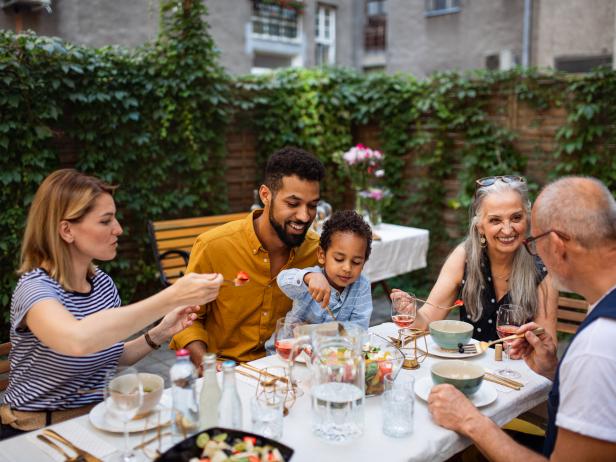Halfpoint Images/Getty Images
When the warm weather hits, we love eating outdoors. Whether it’s in the backyard, or at the park or beach, the ability to eat outside is amazing. However, with the warm weather comes some important food safety rules to follow to keep the food safe and diners healthy. Remember these five rules the next time you choose to eat outside.
Keep cold food below 40 degrees F.
Foods should be kept safe from your fridge or freezer all the way until it reaches its outside destination. Cold food should be packed in a cooler with ice or frozen gel packs. You want your cold food to be kept at 40 degrees F or below to help minimize bacterial growth. You can pack your meat, poultry, and seafood while still frozen so they can stay colder longer.
Your coolers should also be organized properly with one cooler having beverages and the other with perishable foods. This way the beverage cooler, which tends to be opened and closed more often, won’t impact the temperature of the perishable cooler (since they are separate!). That warm air can really increase your cooler temperatures putting those perishable foods at risk for potentially causing illness.
Properly wash your hands.
Even when you’re eating outdoors, proper hand washing is essential to keep everyone safe. Before you set up your outdoor fiesta make sure your hands and surfaces are clean. If you are away from access to running water, bring water in a jug, soap, and paper towels. You can also use moist disposable towelettes for cleaning your hands, according to the Food and Drug Administration (FDA).
Marinate and cook food properly.
It’s just so easy to grill outdoors, but it’s still important to follow proper grilling guidelines to ensure your grilled goodies are safe to eat. Here are several tips to make sure you’re grilling properly:
- Marinate safely: Marinate food in the fridge and not at room temperature or outside. Also, never use the sauce that’s been marinating the food. Reserve a separate portion of the marinade if you plan on using it for your grilled foods.
- Cook food thoroughly: Using a food thermometer is the only way to tell if a food is safe to eat. Eyeballing it or checking the color isn’t good enough! Cook poultry to 165 degrees F; beef, pork, veal and lamb to 145 degrees F; ground beef, pork, veal and lamb to 155 degrees F; ground poultry to 165 degrees F; and fin fish like salmon and tuna to 145 degrees F.
Avoid cross-contamination.
Do not use the same plates that held the raw meat, poultry, or seafood to hold any cooked food unless they’ve been washed first in hot, soapy water – which is not always easy to do outside. Instead, have a clean plate and utensils ready by the grill to serve your food.
Put away leftovers after 1 or 2 hours.
To do so, you want to keep cold foods cold and hot foods hot, which helps minimize the growth of potentially hazardous bacteria. You never want to keep food in the “danger zone” between 40 degrees F and 140 degrees F for more than 2 hours, or 1 hour if the temperature outside is above 90- degrees F. This is when bacteria can multiply so rapidly it can make you sick.
Keep cold perishable foods in the cooler at 40 degrees F or below until they’re ready to be served. If the food sat outside for over 2 hours, or 1 hour when it’s over 90 degrees F outside then toss it. Hot food should be kept hot at or above 140 degrees F. To do so, wrap the hot food well and place it in an insulated container until serving. If the hot food sits out for over 2 hours, or 1 hour if the temperature is above 90 degrees F, it should be tossed.
Toby Amidor, MS, RD, CDN, is a registered dietitian and consultant who specializes in food safety and culinary nutrition. She is the author of The Greek Yogurt Kitchen: More Than 130 Delicious, Healthy Recipes for Every Meal of the Day.
*This article was written and/or reviewed by an independent registered dietitian nutritionist.








More News
Losing a Foot Never Held Her Back, Until She Tried to Join the Military
‘Challengers’: Normcore Clothes on Sweaty Bodies
‘Challengers’ Review: Game, Set, Love Matches